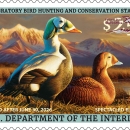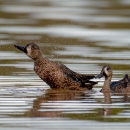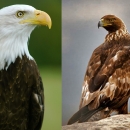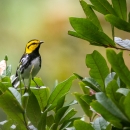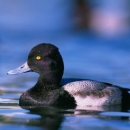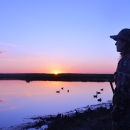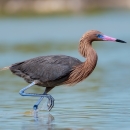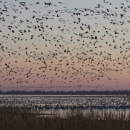What We Do
The U.S. Fish and Wildlife Service Migratory Bird Program is the lead federal agency for conservation of migratory birds, serving to protect, restore, and manage over one thousand different species ensuring these natural treasures will be around for future generations to admire and enjoy.
Our biologists and managers coordinate and conduct surveys and other monitoring activities across North America to determine the status of migratory bird populations.
We work with hundreds of diverse partners to support critically important bird management plans, treaties, migratory bird joint ventures, and initiatives including Partners in Flight, the U.S. Shorebird Plan, the North American Waterbird Plan and the North American Waterfowl Management Plan.
We also administer two multi-million dollar bird habitat grant programs: the North American Wetlands Conservation Act and the Neotropical Migratory Bird Conservation Act affecting millions of acres of bird habitat throughout the western hemisphere.
To conserve habitat for migratory birds, we administer the Migratory Bird Hunting and Conservation Stamp Program, commonly called the "duck stamp." 98 cents of every dollar spent on duck stamps goes towards habitat conservation, and over six million acres of habitat have been conserved so far.
Part of our job is to support and sustain responsible hunting of waterfowl and other migratory game birds, as well as to promote and encourage birdwatching and other bird related outdoor experiences.
Beyond our direct species and habitat conservation efforts, we also conduct outreach and education programs for children and adults through programs such as World Migratory Bird Day, the Junior Duck Stamp Program, and Urban Conservation Treaties for Migratory Birds.
Through these and many other efforts, the Migratory Bird Program is working hard each day to protect and conserve the treasure trove of migratory bird resources across North America.
Management and Conservation
The Migratory Bird Program is charged with conserving migratory bird populations through protection, restoration and management. Bird management includes both population and habitat conservation and management - and generally, managing habitats for bird conservation benefits a variety of species.
To manage birds and their habitats, we work with bird conservation partnerships comprising federal and state agencies, Tribes, nongovernment organizations, universities, corporations, individuals with expertise in bird conservation, and private landowners. These partnerships develop and implement management plans that provide explicit, strategic and adaptive sets of conservation actions required to return and maintain species to healthy and sustainable levels.
To help our partners manage birds and habitats, evaluate and monitor your impact on birds, or fulfill legal obligations, we also provide helpful tools and resources such as Best Management Practices, project assessment tools and other industry guidance documents and decision support tools.
To help regulate migratory bird harvest throughout the four migration flyways, we provide biological information such as survey data.
Biological and management information is also available for several nonhunted species.
Migratory Bird Joint Ventures, public-private partnerships that work in specific regions to conserve habitat for all birds, and conservation grant programs are also available. We also offer training resources for agency staff and non-government partners.
